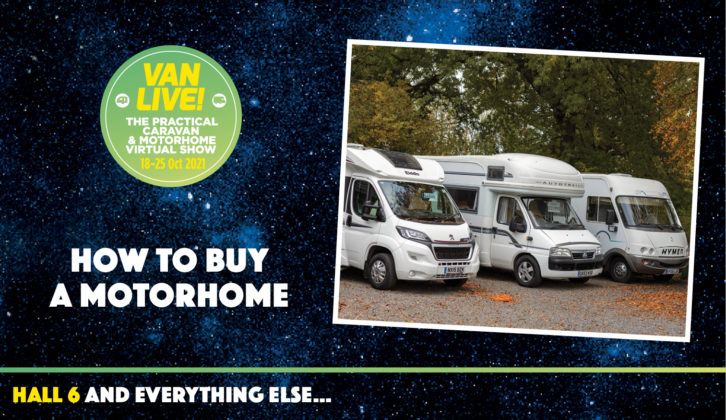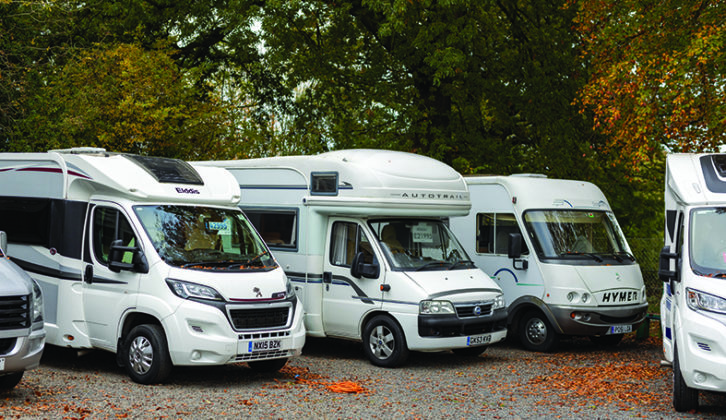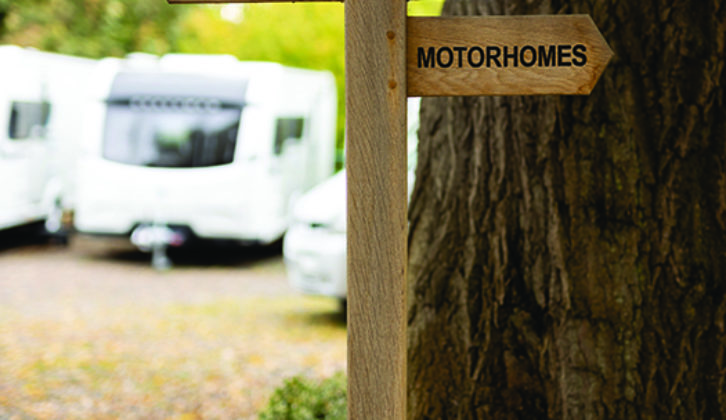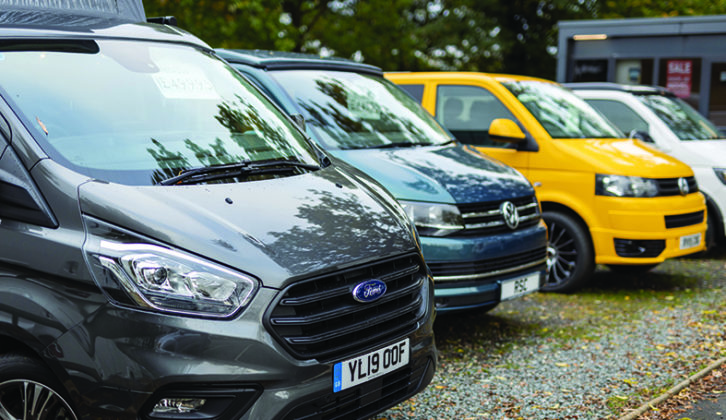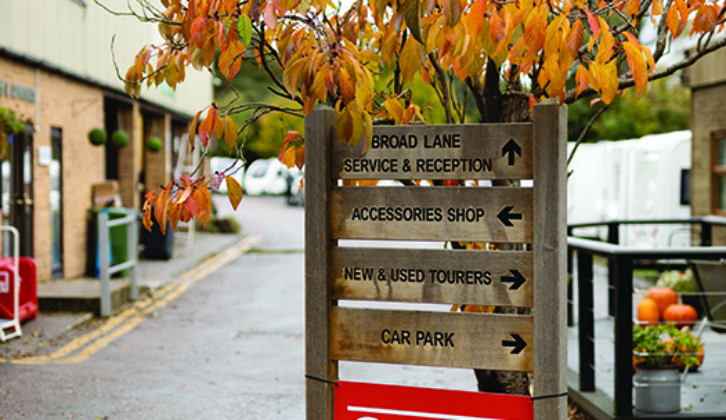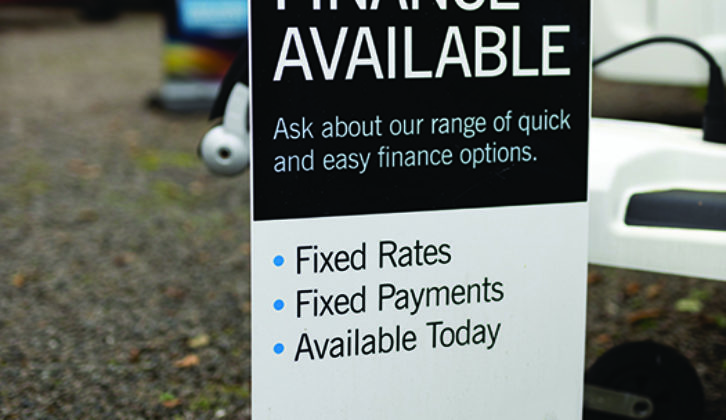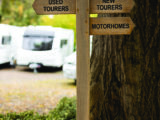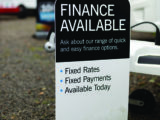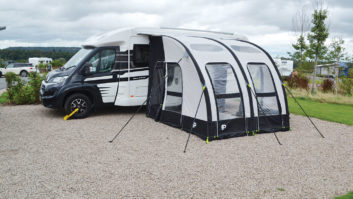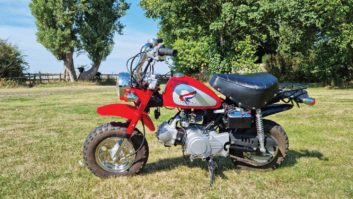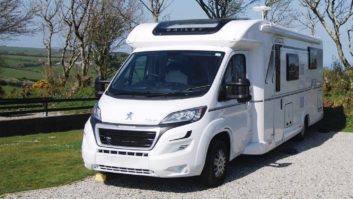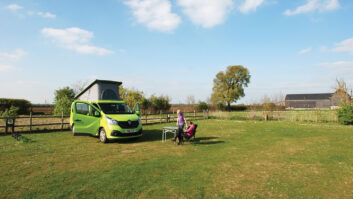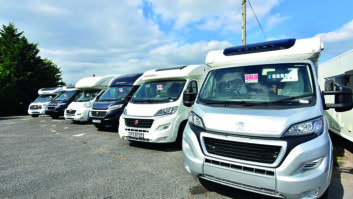A motorhome is a substantial purchase, especially if you are buying new. Shopping for a used model can save a lot of money, or make your budget go further, so you can buy a bigger or better model.
But even a secondhand ‘van can cost tens of thousands of pounds – hardly small change – so it’s well worth taking your time, researching your purchase carefully and only handing over your hard-earned cash when you are sure you have found the right one for you.
Why buy used?
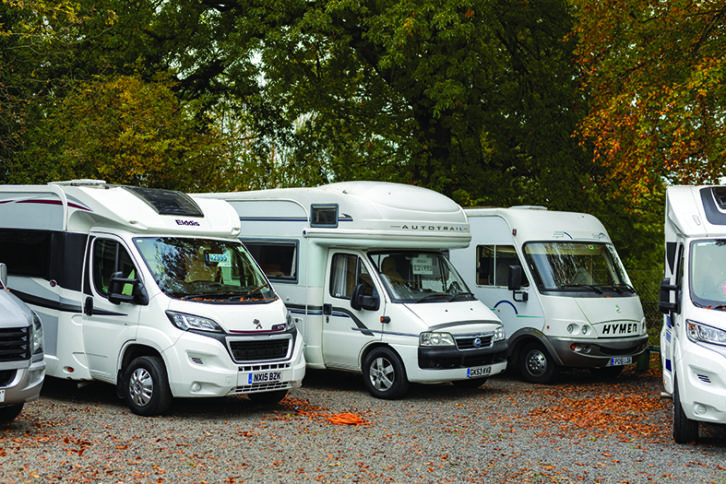
There are many excellent reasons for buying a pre-owned leisure vehicle, rather than a new one.
The most obvious is price. As soon as a motorhome hits the road for the first time, it starts to lose value. The same is true when a caravan is towed away from the forecourt, This steady loss in value is known as depreciation.
While depreciation has a negative effect on the first owner, it will benefit the second or third – you get the same vehicle, with the same layout, features and performance, at a reduced cost.
Just how much could you save? The rate at which a used ‘van depreciates will vary, depending on make and model, condition and mileage.
Some brands and certainly models are more sought-after on the used market than others, and tend to keep their value better as a consequence.
For example, a motorhome that cost the original buyer £50,000 might be on sale for £40,000 after three years. That’s a lot of fuel, pitch fees and bottles of wine that could be enjoyed with the money saved at the time of purchase!
Another upside to buying used that you might not expect is that owners of pre-owned motorhomes and caravans tend to be happier with their purchase.
In the 2019 Practical Motorhome and Practical Caravan Owner Satisfaction Surveys, owners of used vehicles generally reported fewer faults.
We suspect this is due to the first owner identifying niggling problems and having them fixed under warranty.
And talking of warranty: that’s one of the disadvantages of buying used. A new motorhome is likely to have a warranty for the base vehicle, lasting about three years, another for the motorhome itself, and one for the body shell, lasting six years or more.
Choose a used vehicle that is outside the warranty period, and repairs will be down to you. Unless, that is, the dealership you are buying from offers a warranty. Warranties lasting for at least three months are quite common, unless the motorhome is particularly old and tatty.
Alternatively, you could arrange your own aftermarket warranty cover to guard against unexpected bills, for example, from the likes of Autoguard Warranties and MB&G Direct.
Choose the right layout to suit you
Whether you are shopping for a ‘van or a caravan, you’ll find that there’s a bewildering choice of layouts, makes and models to weigh up.
The best way to get to grips with the variety of models is to go to one of the big caravan and motorhome shows, or visit your nearest large dealer.
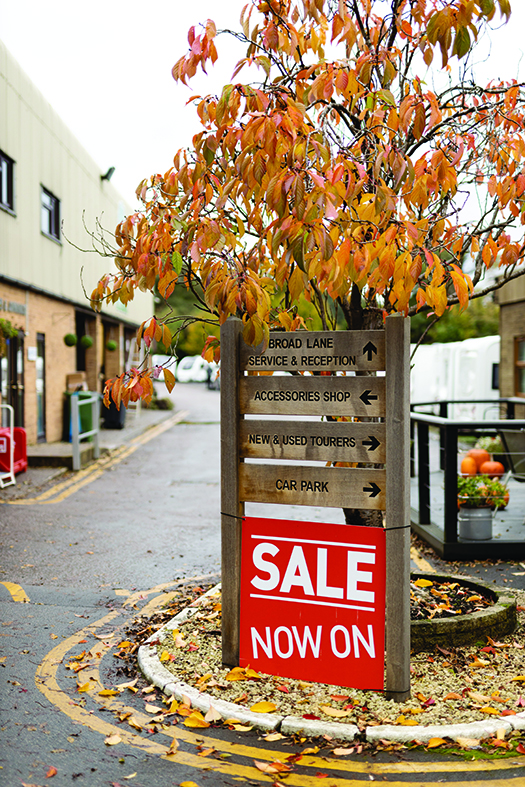
There, you can take a good look at a variety of vehicles and get a better feel for what will suit you. Basically, you are going to need enough berths for the number of people you plan to holiday with. Then, think about how you will use the motorhome.
The more time you expect to spend in the vehicle during the day, the more important the lounge area will be. Likewise, if you are going to eat most of your meals in there, a practical and well-equipped kitchen is vital.
On the other hand, if you see your ‘van as simply a place to sleep in, and you expect to spend most days away exploring and most nights eating out, you’ll probably be happy to forgo some potential living space for the comfort and convenience of a fixed bed.
Think about the size of the ‘van, as well as the layout. A large model might look ideal on the forecourt, but does your licence allow you to drive it?
Make and model
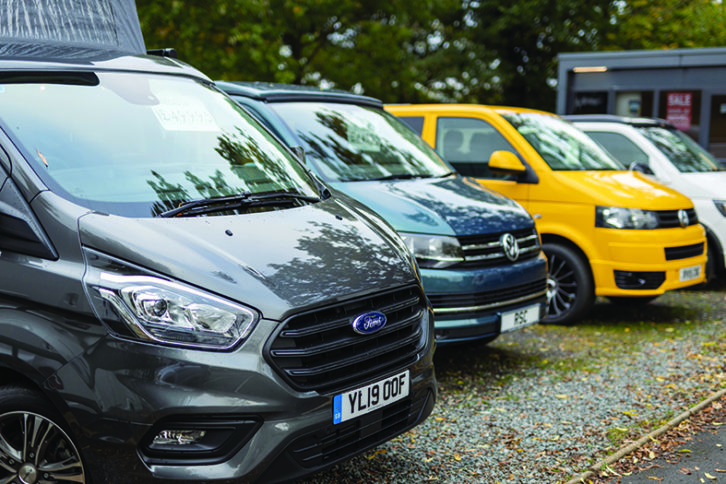
When you’ve developed a good idea for the type of layout that suits your style of touring, you will be in a better position to start to research some of the makes and models that fit the bill.
Motorcaravanners can be very loyal to a particular brand, but do take a look at a variety of makes, to be sure your loyalty isn’t misplaced.
It’s also worth perusing our Owner Satisfaction Surveys to find the most reliable motorhomes and the best places to buy them from.
Where to buy
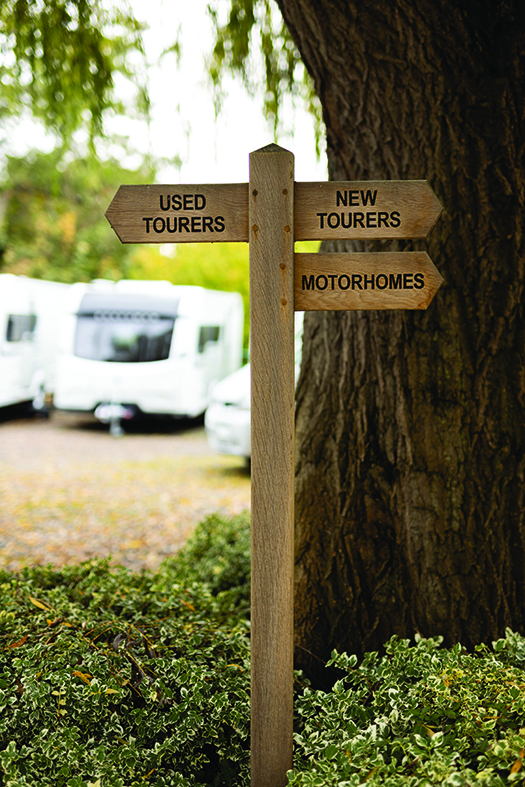
Dealerships will have more choice, and the facility to service the vehicle before you buy it. They are also likely to offer you a warranty.
Private sellers will typically be cheaper than a dealer, but they won’t be in a position to offer you a warranty. So you’ll need to be very sure about the ‘van’s condition before you buy.
Online auction sites can appear very tempting, particularly when bidding is well below the true market value. But we would strongly advise against buying any motorhome unseen, however tempting the price tag might seem.
Most sellers are happy for buyers to view the vehicle before bidding. Even if this means travelling some distance, it’s better to take the time to do so, rather than making a costly mistake.
What to look for
Wherever you eventually decide to buy your motorhome, make sure that you look over any vehicle very thoroughly before you commit to purchasing it.
At this stage, it’s well worth taking a second pair of eyes with you, especially if you have a friend who’s a competent home mechanic, or even an experienced motorcaravanner.
Water ingress can be an issue in any coachbuilt motorhome – keep a careful eye out for any sign of its presence. You can use a sign of damp as a bargaining chip, or better still, walk away and find a motorhome that displays no signs of water ingress.
So far as possible make sure that everything is working as it should. Check all of the lights, electrical components, lockers, cupboard doors, corner steadies and so on.
It might not be practical to inspect every last feature and component, which is why it’s also very important to have a good look through the vehicle’s service history.
Key questions to consider include whether the ‘van has been serviced in accordance with the manufacturer’s recommendations. Is written proof of this being provided?
A comprehensive service history, along with lots of paperwork, is particularly reassuring if you are buying your motorhome privately.
Paying on finance
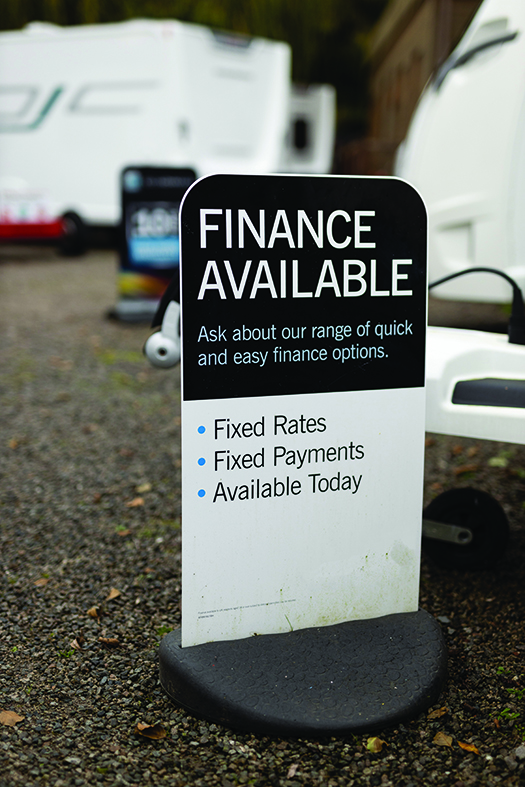
Financing your purchase is often easier than paying in one lump sum, but be careful not to spend more than you might have planned.
Before you decide, think about your monthly income and outgoings. How much is going to be left to pay for the motorhome? And don’t forget you’ll need to budget for annual servicing, insurance, and storage if you don’t have enough space at home.
Dealers will offer finance packages, but compare the interest rates with a personal loan. A few minutes online will give you a clear idea of how much you would have to pay each month if borrowing from a bank, rather than arranging finance through a dealer.
Carefully consider the size of the deposit and the whole cost of the loan, not just the monthly payments. Paying more up front or spreading the cost over a longer period will bring down the monthly payment, but the total spend is likely to be higher.
Your rights
If your ‘van develops a fault, where do you stand? You’ll be in a much better position if you buy from a dealer.
First, the chances are that it will have a warranty. Second, your legal rights are stronger. Under the Consumer Rights Act 2015, any goods (in this case, your motorhome) should be of satisfactory quality, fit for purpose, and as described.
The term ‘satisfactory quality’ is the key here. What is and isn’t satisfactory will vary, depending on the age and condition of the vehicle. A 10-year-old ‘van can’t reasonably be expected to be of the same quality as a new one.
Under the Act, you have up to 30 days to reject goods for a full refund. After that time, you can ask the dealer for repair or replacement.
For the first six months, any fault is assumed to have been present at the point of purchase, unless the retailer can prove otherwise. After that period of time, it will be up to you to show it was there all along.
In practice, it’s best to work with the dealer to resolve any problem and stay on amicable terms if possible. They want you to be happy with your purchase, and return to them when you want to buy another! Legal action is a last resort.
If you buy your ‘van privately, it must be ‘as described’. But otherwise, you are not entitled to any repair, replacement or refund. So balance the saving you might make over buying from a dealer against the peace of mind of dealer back-up and legal rights.
Conclusion
Buying pre-owned can be the perfect route to an affordable, high-quality motorhome. Just do your research first, and go into the purchase with your eyes open.
You’re in Hall 6 Advice Lounge & Event Theatre at Van Live! See what else is happening on stage, visit Hall 3 Motorhome Dealerships, or take me to the Show Guide.
The best way to get to grips with the huge variety of models is to go to one of the big motorhome and caravan shows, or visit your nearest dealer
